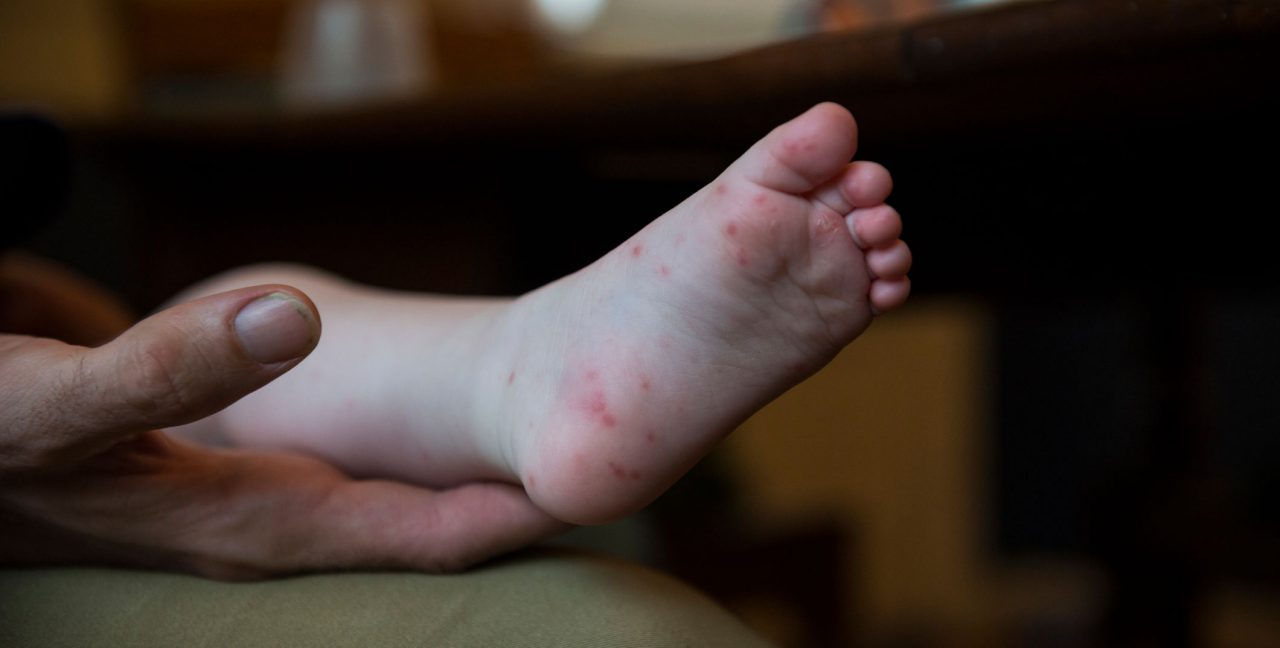Pediatric Infectious Diseases

Infections are a common part of childhood, but some pediatric infectious diseases can become dangerous if not treated properly. Learn more.
Pediatric infectious diseases are illnesses caused by germs, such as viruses or bacteria, that affect children. These infections are spread from person to person, either by direct contact, exposure to bodily fluids, or through sharing objects that a sick child has touched.
Children’s bodies have not developed immunities the way adult bodies have, so they are vulnerable to many germs. Children are also prone to infection because they are not as careful about hygiene as adults, and small children become exposed to germs when they put their hands or other objects in their mouths.
In daycare or classroom environments, children are often in close proximity to each other. As a result, children will be exposed to many infectious diseases when they are still very young. Luckily, most of these illnesses are mild and can be easily treated.
YOU MIGHT ALSO LIKE: Symptoms and Treatment of Whooping Cough
Because children’s bodies can react to germs in different ways than adults’ bodies, your pediatrician may recommend visiting a pediatric infectious disease specialist. However, many common infections can be treated by your child’s regular doctor or may run their course over a few days.
As children get older, their immune systems become stronger and more resistant to infection. When this happens, they become sick less frequently.
Pediatric infectious diseases
Colds, strep throat, ear infections, pinkeye, and stomach bugs are all common pediatric infections. They can affect children of any age and often spread through classrooms or between siblings. They are uncomfortable but not particularly dangerous unless your child becomes severely dehydrated or develops a secondary infection.
Bacterial infections, like strep throat and some forms of pinkeye (or conjunctivitis), can be treated with antibiotics prescribed by your doctor. Viral infections, such colds and many stomach bugs, cannot be treated with antibiotics and will likely heal within a week.
Some pediatric infectious diseases primarily affect very young children. Rashes like roseola, fifth disease, and hand, foot, and mouth disease are most common in children under age three.
While any infection has the potential to be dangerous, particularly if your child has a preexisting conditions, some childhood illnesses are always dangerous. Diseases like meningitis, influenza, measles, and whooping cough can be life-threatening if not treated properly.
These diseases are often protected against with vaccines, but some children still remain vulnerable. Some dangerous diseases, like whooping cough or certain forms of meningitis, may need immediate antibiotic treatment. Others, like influenza, become dangerous only if your child develops a high fever or becomes dehydrated.
When to seek care for your sick child
Though many childhood illnesses can be resolved with rest and fluids, others require a trip to the doctor. Some might even require hospitalization or chronic illness management.
The Boston Children’s Hospital, one of the top-ranked pediatric hospitals in the United States, recommends seeking medical care if your child has symptoms of a prolonged infection, such as pneumonia, whooping cough, or meningitis; might have an insect-borne illness, such as Lyme disease; or has enlarged lymph nodes.
Other signs that you should visit the pediatrician, even for an infection that seems mild, include dehydration and refusal to eat. If your child has a high fever, meaning 101° or higher for babies under six months and 103° or higher for older children, you should also seek medical attention. And if your child has difficulty breathing, call a doctor right away.
You should always see a doctor if your child becomes ill after traveling to another country, has a chronic medical condition, or has a compromised immune system due to cancer treatment or premature birth. These factors can make even mild infections dangerous.
Protecting your children from infectious diseases
Vaccines help children with healthy immune systems develop resistance to dangerous pediatric infectious diseases. Vaccines contain a small amount of a bacteria or virus, which prompts your child’s body to create antibodies without ever becoming sick. These antibodies protect against infection if your child comes in contact with that disease at a later date.
The American Academy of Pediatrics (AAP) recommends a specific schedule of vaccines beginning in infancy. These vaccines are spread out to create the strongest possible immunity within your child’s body. The AAP also provides comprehensive information on vaccine safety.
Vaccines have successfully protected against pediatric infectious diseases and reduced childhood deaths worldwide. Measles, for example, is one of the leading causes of death for children under 5, but vaccines helped decrease the number of children who died from this disease by 74 percent between 2000 and 2007.
In addition to vaccines, teaching your child good hygiene habits is one of the best ways to protect against pediatric infectious diseases.
Remind children to always wash their hands after using the bathroom, sneezing, coughing, or touching their genitals. Always prepare and eat food with clean hands. Make sure older children do not share food or drinks with friends or siblings. Stop babies from putting shoes or other unsanitary objects in their mouths.
If your child does become sick, keep him or her away from other children until the illness has run its course.
Updated:
March 26, 2020
Reviewed By:
Janet O’Dell, RN